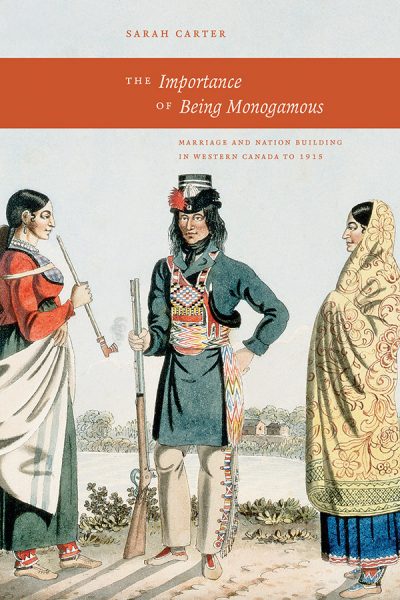Recollecting Lives of Aboriginal Women of the Canadian Northwest and Borderlands
edited by Sarah Carter and Patricia A. McCormack

Subjects: Canadian History, Cultural Studies, History, Indigenous Studies
Series: The West Unbound: Social and Cultural Studies
Imprint: AU Press
A co-publication with the University of Alberta Press
Sarah Carter reveals the pioneering efforts of the government, legal, and religious authorities to impose the “one man, one woman” model of marriage upon Mormons and Aboriginal people in Western Canada. This lucidly written, richly researched book revises what we know about marriage and the gendered politics of late 19th century reform, shifts our understanding of Aboriginal history during that time, and brings together the fields of Indigenous and migrant history in new and important ways.
Of an immense amount of new and pathbreaking research on Native people over the past 20 years, this work stands out.
Sidney L. Harring, professor of law at City University of New York
The importance of monogamy was not something readily evident to much of the varied population of 19th-century Western Canada, Edmonton author and University of Alberta historian Sarah Carter points out in her new study of marriage and nation building in the old West.
Carter’s fourth book, which recently made the longlist for the prestigious Cundill International Prize in History, begins by reflecting on the currency of this subject during the seemingly interminable current debate on family values and same-sex marriage. Carter sees much of this debate rooted in a wistful nostalgia for an imaginary simpler time, when gender roles were firmly in place with the husband as family head and provider, and the wife as the dependent partner — obedient, unobtrusive, and submissive.
The Edmonton Journal
This innovative book brings together a wide range of subjects and sources to pursue a theme not previously articulated in a single work. Although the pressures increasingly placed on First Nations people, from the 1800s onward, to marry in conventional church ceremonies and to eschew polygamy have often been discussed, the extent to which other groups were pressed to conform to mainstream practices is little known…. Carter demonstrates that monogamy was not just an ‘Indian’ issue; Canadian authorities also challenged non-conforming minorities of European background. These groups, often small and dispersed, were less successful than established Aboriginal communities in subverting and resisting the pressures imposed on their modes of marriage and divorce.
Histoire Sociale/Social History Journal
This work is licensed under a Creative Commons License (CC BY-NC-ND 2.5 CA). It may be reproduced for non-commercial purposes, provided that the original author is credited.